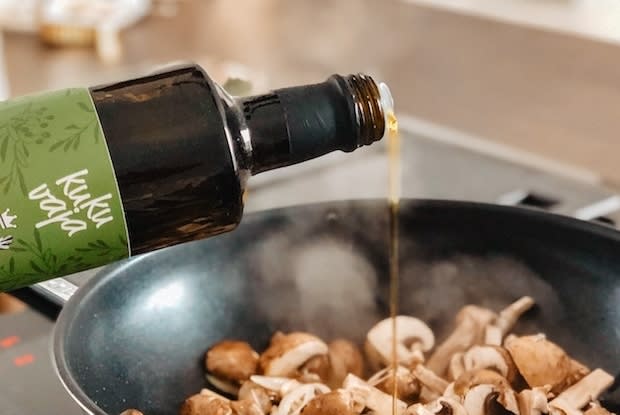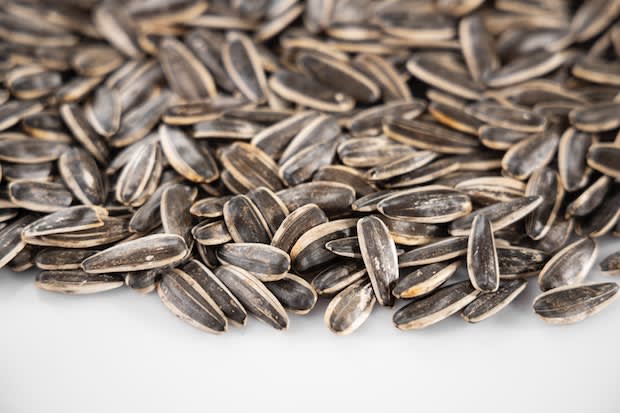Table of Contents
I. Dangerous Cholesterol Levels
III. Increasing Soluble Fiber Intake
Dangerous Cholesterol Levels
Cholesterol is a wax-like substance produced by your liver, and your body needs it to function properly. Cholesterol moves around in your body by traveling through your bloodstream as particles called lipoproteins. High-density lipoprotein (HDL) is good because it can carry cholesterol from other parts of your body to your liver, where it can then be removed.
On the flip side, low-density lipoprotein (LDL) can build up in your arteries and potentially lead to health complications. Your liver creates all the cholesterol you need, so high cholesterol is often the result of a poor diet. [1]
High cholesterol is dangerous for many reasons. For one, it does not have many symptoms, and many people may not show symptoms at all until their condition becomes severe. High cholesterol is also dangerous because it can lead to vascular diseases like a heart attack or stroke. [2] It is important to have your cholesterol levels checked regularly. Those who are diagnosed with dangerous cholesterol levels may be prescribed Crestor (rosuvastatin), Lipitor (atorvastatin), Zetia (ezetimibe), or Zocor (simvastatin) to prevent further complications. Lifestyle changes like weight management and regular physical activity can improve vascular health, but cholesterol intake is the root of high cholesterol for most people. Read on to learn about diet tips to lower cholesterol. Saturated fat raises your LDL levels and is considered a bad fat. Dairy products, chocolate, baked goods, and deep-fried foods are high in saturated fat. Trans fat is considered a bad fat as well because it can simultaneously raise your LDL and lower your HDL. Foods made with hydrogenated oils like margarine, crackers, and fries are high in trans fat. [2] Forgoing these foods may seem difficult, but there are many healthier options available. For example, avocados are among the best fat sources and can lower LDL while raising HDL. [3] They consist mainly of monounsaturated fat, which contains many health compounds. Studies show that those who consume avocados regularly tend to maintain a healthier weight than those who do not. [3] Like avocados, extra virgin olive oil contains monounsaturated fat and is incredibly healthy in the right amounts. Olive oil also contains vitamin E, vitamin K, and many antioxidants with anti-inflammatory properties to manage LDL in the bloodstream. It can also lower blood pressure and reduce the risk of heart disease. Coconut oil, whole eggs, dark chocolate, and cheese are also great sources of fat. [3] Talk to your dietician about ways to switch out unhealthy fats from your diet. Whole-grain cereals, legumes, and many fruits can supply your body with the soluble fiber it needs. Soluble fiber can prevent your digestive tract from absorbing cholesterol, so it is an essential part of a cholesterol-friendly diet. Oatmeal and oat bran are examples of whole-grain cereals rich in soluble fiber. Examples of healthy legumes include kidney beans, lentils, black-eyed peas, and chickpeas. Apples, oranges, prunes, pears, and bananas are amazing sources of soluble fiber and other nutrients. [3] Fruits and vegetables contain compounds called plant sterols and stanols that work like soluble fiber and reduce how much your body absorbs cholesterol. [4] These compounds are found in plant cell membranes and block cholesterol absorption because they are similar in structure to cholesterol. In the right quantities, these compounds have been shown to lower LDL by 14 percent. Sterols and stanols are commonly found in: You will want to limit your salt intake to keep cholesterol levels manageable. By eating less than one teaspoon of salt a day, you can lower your blood pressure and your risk of heart diseases. You may also want to limit your alcohol intake because it can add extra calories to your diet, leading to weight gain. Being overweight can cause LDL increases. Alcohol can also raise your blood pressure, so it is best to consume in moderation. [2] Symptoms of high cholesterol may go unnoticed for many years, but it is never too late to start eating better. If you experience chest pain, extreme fatigue, shortness of breath, or numbness in your fingers or toes, you may have dangerous levels of high cholesterol. The good news is there are statin medications like Crestor (rosuvastatin), Lipitor (atorvastatin), Zetia (ezetimibe), and Zocor (simvastatin) available to help treat high cholesterol symptoms. In combination with dietary and lifestyle changes, the right treatment plan can help lower your cholesterol. The content provided in this article is based on thorough research and in some cases, reviewed by a medical professional. Our goal for the information is to provide helpful, general health informational. It is not intended as a substitute for professional medical advice.
Choosing Healthier Fats

Increasing Soluble Fiber Intake
Fruits and Vegetables

Foods to Avoid
